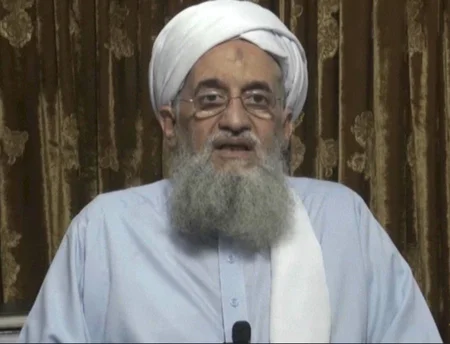By killing Al Qaeda icon Ayman Al Zawahiri in the heart of Kabul on Sunday, the US has achieved three key objectives.
After taking a beating to its reputation as a spearhead against global terrorism, the United States has recovered some ground to be once again considered a leader in the international counter-terrorism drive.
At any rate, there is little doubt that Americans are the champions of drone strikes, with Zawahiri, the Egyptian doctor and the slain Osama bin Laden’s top adviser, adding to the list of terrorists killed by the unmanned machines that can fire missiles with deadly accuracy, while being remotely controlled even from far away California.
The Al Qaeda hall of fame killed by drone strikes includes the suave Anwar Nasser al-Awlaki, a well-spoken US citizen who operated from the mountains of impoverished Yemen. Awklaki was killed in a drone strike in September 2011. Outside Al Qaeda other notables who perished include Taliban leader Akhtar Mohammad Mansour, the successor of the group’s founder Mullah Omar. A drone strike killed Mansour in May 2016 in bone-dry Balochistan when he was returning after meetings in Iran. The list of trophy terrorists who were droned down is long, and as Zawahiri’s killing with a novel missile suggests, it is possibly expanding.
May Allah Elevate his rank in Jannath #Anwar_Al_Awlaki_Ra pic.twitter.com/AFTmo31O9c
—
حماد (@Ha_mmad_1) April 5, 2022
Second, the killing of Zawahiri is likely to bolster US President Joe Biden's falling numbers in the popularity charts. The elderly and sometimes ailing President badly needs a high octane push to restore confidence among the American people about his ability to lead the powerful nation, whose authority is being increasingly challenged in a multipolar world.
But most importantly, the US, embarrassed by the sudden takeover of Kabul in Afghanistan last year, has delivered a body blow to the Taliban, which was seeking international legitimacy by running a campaign that it had completely distanced itself from international terrorism.
But as it turns out there are clear pointers that Zawahiri was being shielded in a safehouse in the heart of Kabul by the Haqqani network, the core of the Taliban 2.0. In an interview with Al Jazeera, Afghan journalist Bilal Sarwary based in Toronto points out that according to his sources, Zawahiri was transported from North Waziristan or from North Waziristan sometimes in May by Aziz Haqqani, a member of the Haqqani family. He further adds as that the terror kingpin was hosted by the chief of staff of the interiror minister Sirajuddin Haqqani and the police chief of Kabul Wali Jan Hamza.
Citing photos, Sarwary alleges that members of the Haqqani fiamily and reportedly the interior minister himself visited the safehouse. “So it leads to no doubt that Ayman Al Zawahiri was under the protection of the Haqqanis.”
#AFG “According to some sources Aymen Al Zawahiri may have been transported via North- Waziristan or from North- Waziristan sometime in May by Aziz Haqqani.” My live hit with @MaryamNemazee @AJEnglish pic.twitter.com/uuvOPHL40V
— BILAL SARWARY (@bsarwary) August 3, 2022
Taken aback, the Taliban on Thursday said that they were investigating the US "claim" that al-Qaeda leader Ayman al-Zawahiri was killed in a US drone strike in Kabul.
"The government and the leadership wasn’t aware of what is being claimed, nor any trace there," Suhail Shaheen, the designated Islamic Emirate representative to the United Nations, who is based in Doha, told journalists in a message.
"Investigation is underway now to find out about the veracity of the claim," he said, adding that the results of the investigation would be shared publicly.
Apart from its drive to gain international recognition, the Taliban’s response is likely to impact its attempt to access billions of dollars in frozen funds, which followed the overthrow of the US backed government last year.
Also Read: Hellfire R9X missile that slices through target but does not explode used to kill Al-Qaeda chief?




















